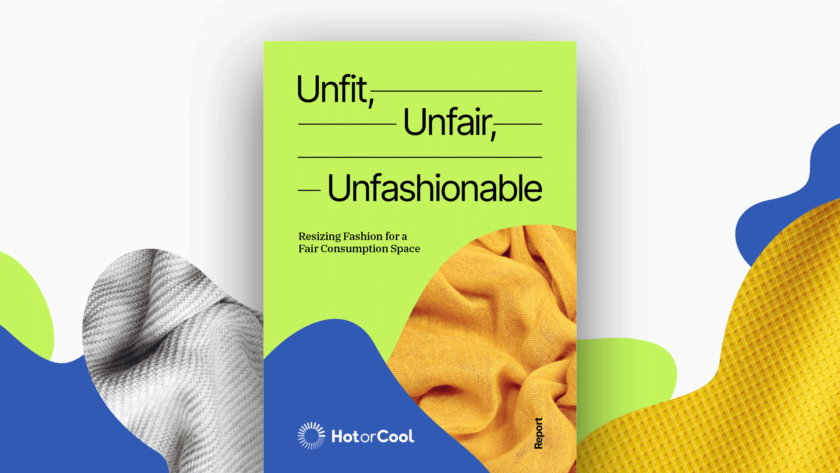Minimize your fashion purchases to just five pieces a year, and help protect the planet! Every year, more than 100 billion new clothes are made, and 65% of them end up in landfills within just 12 months. The fashion industry has a big problem with overproduction. A report from the Hot or Cool Institute in Berlin recommends a good wardrobe should have no more than 74 pieces of clothing and 20 main outfits. It also suggests that people limit their purchases to five items each year, including secondhand clothing. This change is important because the fashion industry is responsible for about 4% of global pollution. To help the planet, the industry needs to cut pollution in half, reducing it to 1.1 billion tons of CO₂ by 2030.

Key Facts:
1. Global Emissions Target: The fashion industry must reduce emissions to 1.1 billion tons of CO₂ by 2030, a 50% cut from 2018 levels.
2. Wealth Inequities: The richest 20% of people produce 20 times more pollution than the poorest 20%, highlighting stark inequalities in consumption.
3. Country-Specific Goals: High-income countries need to reduce fashion-related emissions by 60% by 2030, while upper-middle-income countries should aim for a 40% reduction.
4. Wardrobe Guidelines: A sustainable wardrobe should not exceed 74 pieces, with a maximum of 20 main outfits.
5. Limit Purchases: To align with the 1.5°C target, individuals should limit new clothing purchases to five items per year.
Key Recommendations for Sustainable Fashion Consumption:
– Focus on High Consumers: Policies must target the richest 20% of consumers globally, as they are responsible for a disproportionate share of fashion-related emissions and drive wider consumption trends.
– Carbon Footprint Reduction Goals by Country Income Levels:
– High-Income G20 Countries (e.g., US, UK, Australia): Must reduce fashion-related emissions by 60% by 2030 to align with the 1.5°C Paris target.
– Upper-Middle-Income Countries (e.g., China, Brazil, Mexico): Need a 40% reduction by 2030, addressing high-impact segments while considering that a portion of their populations remains below the sufficiency threshold.
– Lower-Middle-Income Countries (e.g., India, Indonesia): Already within the 1.5°C target limit on average for fashion emissions.
– Sustainable Wardrobe Guidelines: A “sufficient” wardrobe should consist of no more than 74 garments and a core of 20 outfits. Purchases—including secondhand—should be limited to five items per year.
– Reduce Overproduction and Overconsumption: Limiting new clothing purchases is essential to reduce fashion’s carbon footprint. Buying fewer new items is up to four times more effective than extending the use of garments.
– Adopt Circular Models: High-income countries need to not only reduce purchases to 2010 levels but also promote circular business models, lowering emissions across the fashion lifecycle, from production through disposal.
– Systemic Change for 1.5°C Target: Meeting climate goals will require fundamental shifts in both production and consumption. Technological improvements alone are insufficient without significant lifestyle and behavioral changes.
– Address Environmental Impact of Waste: Secondhand exports contribute around 10% of disposal emissions, with about 30% of these items incinerated or landfilled in their destination countries.
Key Facts: Changing Power Dynamics in Fashion Demand
- Consumer Influence: Fashion companies push for more sales through ads and fashion events. Bigger companies have more power to shape what people buy.
- Diverse Influencers: Many actors, like magazines, social media influencers, and celebrities, influence clothing choices. Many have ties to the fashion industry and promote changing trends.
- Old vs. New Influence: Fashion magazines used to set trends. Now, social media influencers impact what people wear based on their follower count. They can also promote sustainable choices.
- Consumer Role: Reducing clothing demand in G20 countries needs action from household consumers, who buy the most clothes. Spending varies based on income.
- Wealth and Influence: Wealthier people buy more clothes and can affect trends. Their choices can lead to positive changes in the fashion industry.
- Corporate and Public Consumers: Businesses and public institutions also buy clothing in large amounts. They are key targets for efforts to cut consumption.
- Potential for Change: Focusing on both households and businesses can lead to real reductions in clothing consumption and promote sustainability in fashion.
These findings urge everyone to work together to buy less, buy better, share, share better, and support recycling strategies. As part of the marketing machine, fashion magazines, social media, and celebrities are responsible for the overconsumption and clothing pollution. The Hot or Cool report inspired the Journalist Tiffanie Darke to start the “Rule of 5” campaign. The campaign encourages people to limit their new purchases, including secondhand items, shoes, and bags, to just five items this year (not including socks and underwear). Behaviour change is required on a mass scale to reach the 1.5 degree target. Also consumers collectively have power to signal a demand for fixes, despite the pressure to buy. by buying less, brands and governments will be propelled to make the fashion industry more sustainable.
The report is dense, packed with facts that not only clarify the gravity of the fashion industry’s impact on our planet but also offer a glimmer of hope. With actionable insights and clear guidelines, it empowers us to make meaningful changes in our consumption habits. By taking steps toward a more sustainable wardrobe, we can be part of the solution, driving a movement that transforms the fashion landscape for the better. Together, we can redefine what it means to be stylish and conscious, proving that less truly can be more in the fight for our planet’s future.
For more information, check out the full report here.

